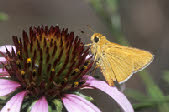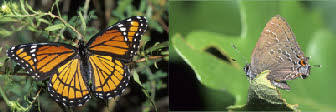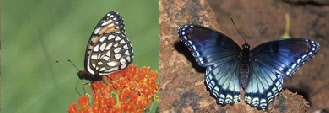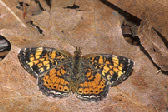The Butterflies of the World Foundation
A Non-




Sandia Hairstreak
Callophrys mcfarlandi, P. Ehrlich & Clench, 1960
Subfamily Theclinae
Tribe Eumaeini
Taxonomy
The family Lycaenidae is a large and varied worldwide group that has 4,000 to 6,000
species depending on the ever-
All photographs, artwork, text and website design are the property of The Butterflies of the World Foundation (unless otherwise stated) and are protected under national and international copyright laws. Photographs, artwork or text on this website may not be reproduced in any way without prior written consent of The Butterflies of the World Foundation.

Callophrys mcfarlandi, perched on larval food plant, Beargrass, Nolina micorcarpa,
Tunnel Springs Campground, Sandia Mountains, Cibola National Forest, Sandoval County,
New Mexico, 1 May 1998 Ref
#: I-

Callophrys mcfarlandi, Tunnel Springs Campground, Sandia Mountains, Cibola National
Forest, Sandoval County, New Mexico, 1 May 1998 Ref
#: I-

Beargrass, Nolina micorcarpa, common larval food source, Tunnel Springs Campground, Sandia Mountains, Cibola National Forest, Sandoval County, New Mexico
Ref #: F-
General Information:
Callophrys mcfarlandi belongs to the subfamily Theclinae. It’s range includes most of New Mexico then southward into Texas and Mexico. Its habitat is southwestern desert with beargrass.
Lifecycle:
The larval food plant for this species is beargrass, Nolina sp. Eggs are laid on flower stalks of the host plant and caterpillars feed on flowers and fruits. There is one early summer brood and sometimes a second brood.